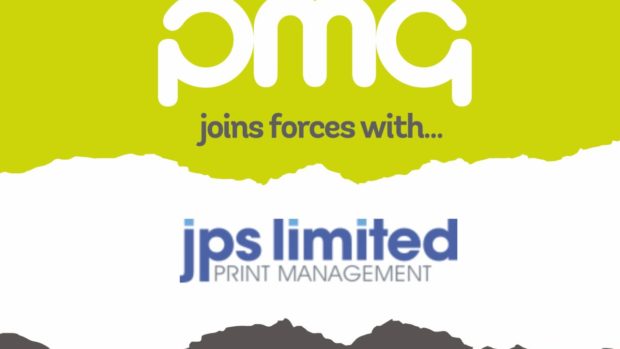
Your business is under threat. Margins are under pressure, marketing budgets are being squeezed and God knows where the overall economy is heading. But before you turn the page, this is no doom and gloom piece, far from it.
There are a number of ways you can dramatically improve your reach, achieve unprecedented levels of engagement, increase conversion and improve ongoing loyalty around your brand. If you are already investing heavily in the printing and distribution of catalogues, you can achieve all of the above by spending less and maintaining print catalogues as part of your overall communications mix.
So where do you start? Well, first of all it’s important to ask yourself why you are producing a catalogue. Is it to drive engagement and inspiration or purely a sales tool? What outcome are you looking to achieve; physical footfall or online sales? Or is it because that’s what the person in charge has been doing for years and so that’s how it will continue?
Whatever the answers, you need to also be asking questions about your audience. Who are you targeting? What devices are they using? How are they currently interacting with your brand and where are they spending most of their time? Which digital marketing channels are they most responsive to and what are your competitors doing?
You should consider exploring the breakdown of the buying process and looking at what is happening at each stage-awareness, interest, evaluation, conversion and repeat-and thinking about how you can enhance each point in that buying journey and importantly improving the post-sales experience.
Armed with the answers to these questions, you are ready to start the journey.
Redistributing the cash
I’ve made a bold claim that you can migrate your catalogue communications into the digital age, and keep a print element and reduce your overall spend. How? You’ve probably guessed-dramatically reducing the amount you spend on print and distribution.
Whilst I believe there can be a role for the print catalogue in the overall communications mix, it should be one that is highly targeted and ideally, personalised. Maybe the top five per cent of customers by spend should receive something through the post-they are clearly very engaged with your brand and would value getting something “extra special”.
Content, content, content
If you know what your consumers like and who you are targeting, you can create relevant quality content and start building digital experiences from the ground up. Never take print content and just shoehorn it online. The user experience is completely different.
Content can come in many forms and creating really good content needn’t be expensive. You are of course already making content around your products, or being supplied content by the manufacturer. But think about taking the money you’ll save by reducing your print quantities and investing it in making far better product content.
Why not consider using video to create 360-degree product shots, for example? You could even film product experts giving a one-minute roundup of a certain product, or show the product in action and definitely make sure you have multiple product shots. Unlike the restrictions with print, each product in an interactive catalogue can have its own image gallery, video and even spread. No longer do you have to think about which will be your hero product. They’re all heroes in digital!
Then there is relevant, good quality editorial content, which will drive genuine engagement. Much has been written about how retailers are becoming publishers and vice versa, and it’s an area I feel is about to explode. Examples include Net-a-Porter and ASOS.
And it’s not just fashion that lends itself to this approach, almost any product category can be editorialised-think of what you can do in verticals such as sports, DIY, baby, toys, electrical or gadgets. Indeed, a vast amount of TV programming is based on these very areas.
Format and frequency
So now you have all this great content, what next? In a digital environment you have depth, rich media, interactivity and personalisation all at your disposal, but it’s important to remember that the beginning, middle and end format is still just as important. Design bespoke, carefully crafted, rich catalogue experiences.
The real “killer feature” with interactive catalogues is that you are no longer constrained by low frequency. In the print model, catalogues are annual, biannual or quarterly because of obvious cost limitations. With a well thought through digital production process, good content and clever distribution, there is no reason why you can’t completely rethink catalogue communications and create monthly, fortnightly or even weekly publishing schedules. Fewer pages, great content, personalisation and higher frequency are the secret ingredients to building that loyal, repeat purchase customer base.
Moreover, because you are in a digital environment, you can update each communication or catalogue any number of times, so out of stock items can be removed and slow-moving items can be given a harder push. You can flex your content and communications to match your specific business needs, in real time.
Distribution
Here’s where the real magic begins. As important as it is to create the digital experience from the ground up, so too is it to bear in mind the nuances of each distribution channel. For example, the user experience on the iPad will be quite different to the desktop web experience.
The common channel is an extension to the email user journey, where you provide a link from the email and can easily personalise the catalogue experience based on data you have on your customers. Email response rates improve greatly when you send people a content experience of real value.
You also have a website with a decent amount of traffic, so why not leverage that and place this catalogue experience within an iFrame on your site? There is no need to worry about existing web architecture constraints-just a few lines of code and you’re live.
Struggling with what to offer people who have “liked” your brand on Facebook? Simply place your interactive catalogue into that environment-even make it a Facebook App with some tweaking and you are offering your customers something of real value on a recurring basis, which is easily shareable with friends, can be personalised based on profile information and provides untold data on your customers.
Think about the fact that at all these touchpoints your interactive catalogue could be transaction-enabled so at the point where the customer intent to purchase has been created, you provide that facility without leaving the experience. Creating widely distributed, transactional experiences has never been more exciting and possible.
We can’t end without touching in the iPad. A number of our clients are seeing visitors from iPads creeping towards 10 per cent of their overall web traffic, and it will continue to grow rapidly over the coming months. And of course, this offers a unique in-store sales tool, which is web connected and always up to date, once again mitigating the need for costly on-site print materials.
There has never been a more exciting time in communications, where content, eCommerce, data and digital distribution have intersected, enabling the creation real value for the consumer and delivering significant benefits to retail businesses.
by Paul Fifield, chief executive of content, Ceros.







Share